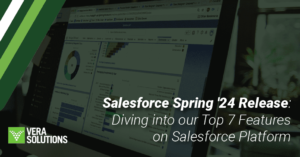
Though Vera helps partner organizations increase efficiency and impact with customized data systems, many of the big questions we ask before implementing a Vera system don’t involve technology at all. In fact, they revolve much more around our partner organizations’ approaches, methods, and processes. Before diving into configuration and development, we want to know that an organization has thought deeply about their programs, goals, and metrics for success. We investigate:
- The Why: What specific questions will this data system help an organization answer? How will answering those questions—or putting feedback loops in place to routinely answer them on a regular basis—move the needle for the organization?
- The Data Chain: How is data collected, analyzed and used? When, where, and by whom?
- The Impact: Has the organization created a logic model and thought critically about indicators for success? Do data collection processes match those indicators?
- The Dedication: Will the organization commit one or more team members to administering and maintaining the system? Does the organization have an explicit plan for adopting the new technology? Are senior-level decision-makers bought into making the new system a success?
In Practice
To see how this plays out in practice, consider a recent visit to a healthcare delivery organization in Mumbai. To answer the four questions above, my team and I met with organization leaders at their clinic, where we could not only take note of the current data collection processes and talk with staff about the need for a data system, but also observe their services being delivered. That visit helped us answer these four important questions.
- The Why: The organization needs to increase real-time data accessibility as they scale into rural villages.
- The Data Chain: During each of a patient’s clinic visits, a healthcare provider completes an assessment form, beginning with a treatment plan on the first visit. The system will link this assessment to the patient’s contact information and store subsequent patient updates.
- The Impact: Their model includes using World Health Organization standards in treatment plans, a process for iterating treatment improvement for each patient, and data points to measure their goal of developing standardized protocols.
- The Dedication: The organization had identified a system champion and created a PowerPoint plan outlining highest priority functionality, mapping out different levels of access users needed to have, and brainstorming technology options.
Comprehensive answers to these questions allowed us to develop a plan to move forward with building a clinic management database with offline data capture.
The Big Picture
At Vera, we help organizations shape what they do, what they collect, and what questions they’re trying to answer. To provide this guidance, we must view an organization’s data processes not only through the lens of technology, but also in the context of social impact and specific organizational improvement.
A mentor once told me, “If a data system’s purpose is to report to donors, then the system becomes a cost. If the data system is used to increase efficiency, then the system becomes a long term investment in creating impact.”
Vera is in the business of providing social impact organizations with powerful and adaptable technology tools to support long-term impact. We do that by answering the non-technology-related questions first.
Want to learn more about getting ready for a Vera system? Drop Athan a line at athan@verasolutions.org.



